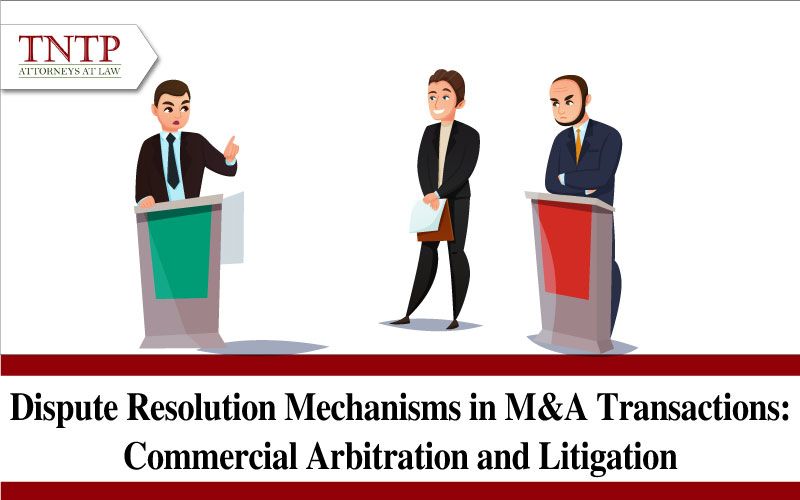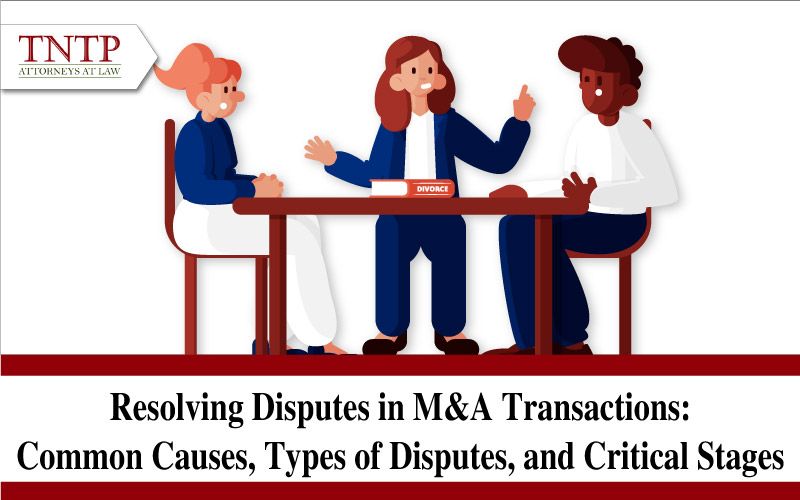Legal Recommendations for the Application of the Earn-out Mechanism in M&A Transactions
In the structure of a mergers and acquisitions (M&A) transaction, the mechanism for determining and paying the purchase price is a critical factor in the success of the deal. Rather than applying a fixed price paid entirely at the time of transfer, many transactions adopt flexible pricing models to balance expectations between the seller and the buyer, while also managing legal risks that may arise during and after the transfer. In this context, the “Earn-out” mechanism is increasingly used as a solution to align interests and allocate risks between the parties. This article analyzes the Earn-out mechanism from a legal perspective and offers in-depth recommendations for businesses and investors to minimize disputes and ensure transactional efficiency.
1.When should the earn-out mechanism be considered?
Before adopting a pricing structure, the buyer must conduct a thorough assessment of the target’s operational performance, financial structure, and forecasting reliability.
The Earn-out model is particularly appropriate in cases where the target has not yet reached financial stability, is undergoing growth, or holds substantial potential contingent upon the execution of future business strategies. It is commonly used in transactions involving: Startups and early-stage companies; Businesses in the midst of restructuring; Entities with licensed or promising projects that have not yet generated revenue.
Under this model, the buyer pays a portion of the purchase price at closing, while the remaining amount is paid contingent upon the target achieving pre-agreed financial metrics. This mechanism protects the buyer from overpaying if performance falls short of expectations, while motivating the seller to ensure strong post-closing performance.
2.Establishing verifiable and objective financial targets
The effectiveness of an Earn-out clause depends on whether the agreed financial targets are clearly defined, objectively measurable, and verifiable through independent means, thus reducing interpretive ambiguity and the risk of contractual disputes. Common financial benchmarks include net revenue, net profit after tax, and EBITDA (Earnings Before Interest, Taxes, Depreciation, and Amortization).
The share purchase agreement (SPA) should clearly specify: i) the calculation formulas; ii) the financial data sources to be used; iii) the applicable accounting standards (e.g., VAS or IFRS); and iv) the measurement periods. Where necessary, the parties should agree to use audited financial statements prepared by an independent firm to verify whether the agreed performance targets have been achieved. This not only enhances objectivity but also minimizes the risk of prolonged disputes over accounting technicalities or manipulation of operational data.
3.Safeguarding oversight and post-closing audit rights
As the Earn-out is inherently tied to post-closing performance, the buyer must retain reasonable oversight rights to ensure the integrity of data collection and reporting. Accordingly, the SPA should include provisions covering: i) Buyer’s access to accounting systems, financial software, business plans, and contracts; ii) Reporting frequency, data format, and disclosure scope; iii) Regular or ad hoc audit procedures; iv) Covenants prohibiting concealment, delay, or artificial adjustment of performance metrics.
Where the seller remains involved in management post-closing, the SPA should delineate limits on decision-making powers (e.g., no abnormal cost adjustments or unauthorized long-term contracts) to prevent interference with financial outcomes. Additionally, parties may consider mandatory post-closing audits conducted by a neutral third party jointly appointed by both sides.
4.Using escrow to ensure payment security
An escrow arrangement is an effective mechanism to ensure that Earn-out obligations are performed transparently and are not subject to the discretion of either party.
An escrow account should be established in the following cases: i) where the Earn-out period is extended (typically exceeding 12 months); ii) where the seller is an individual or a company that does not undergo regular audits; or iii) where the transaction involves a high value and carries significant potential risks.
The following matters should be clearly stipulated in the contract: i) the total amount and percentage of the escrowed funds; ii) the escrow account administrator (a bank or an authorized third party); iii) the disbursement conditions (e.g., confirmation of target achievement, absence of breach); and iv) the dispute resolution mechanism relating to the escrow fund.
Escrow not only prevents unilateral payment delays by the buyer but also safeguards the seller’s entitlement once conditions are met.
5.Establishing liability caps and exclusion clauses
To ensure fairness and predictability, the SPA should also include:
- Liability caps: Parties should agree on a maximum indemnification amount for post-closing breaches, often ranging from 10% to 30% of the total transaction value, depending on the extent of disclosures and the risk profile revealed during due diligence.
- Claim periods: The agreement should define the timeframe within which the buyer may assert claims for breach of contractual obligations, typically 12 to 24 months after closing to provide legal certainty and manage exposure.
- Exclusions from liability: For example, the seller shall not be held liable in cases arising from force majeure events as defined by law, including but not limited to natural disasters, war, pandemics, changes in legal or administrative policies, or industry-specific crises beyond the reasonable control of the parties.
The Earn-out mechanism is a sophisticated contractual tool that helps allocate risk, align expectations, and incentivize post-closing performance in M&A deals. Its effective implementation requires the buyer and seller to carefully evaluate the target’s current condition, possess robust internal assessment capabilities, and maintain close coordination with legal and financial advisors from the outset of the transaction through to post-closing compliance.
This article, titled “Legal Recommendations for the Application of the Earn-out Mechanism in M&A Transactions” is presented by TNTP. Should you require further legal consultation or support in structuring or executing M&A transactions, please do not hesitate to contact us.
Sincerely,








